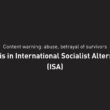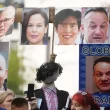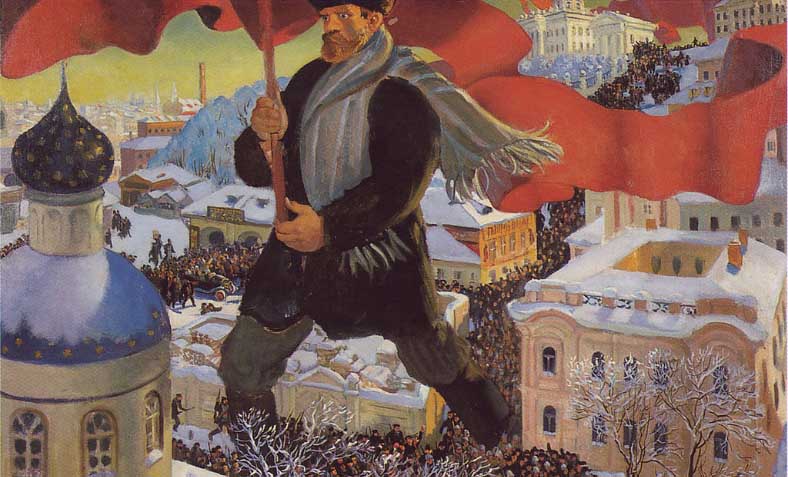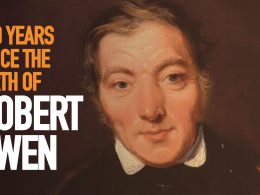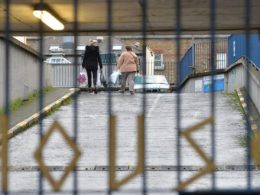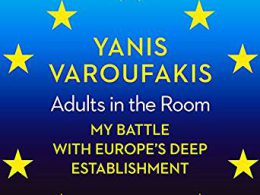By Eddie McCabe
To really fathom the truth of the 1917 October Revolution, no source is more valuable than the voices of the people – working-class women and men, soldiers, sailors, poor peasants, young people – whose collective energy and daring realised the world’s first socialist revolution. To be sure, it was the political awakening of millions of people that made October, if nothing else, a triumph of democracy: a conscious attempt to institute “rule by the people” – in actuality – through the conquest of political and economic power by the working-class and poor peasant majority.
Amid the vanguard of the upheaval were the 30,000 workers of the Putilov factory, the largest in Petrograd. Their tradition of militancy was renowned and their particular clout came from the value of their heavy industrial output to the state’s infrastructure and the war effort. In a statement in July 1917 they declared to the city’s toilers:
“Citizens: Take an honest look at the black, smoking chimneys rising up from the earth. There, at their foot, creating new assets for you that you need, are people just like you, suffering and tormented in bondage by the most complete and fierce exploitation. Class consciousness is maturing slowly there. Hatred is building up in their hearts, and the sweet conditions of another life for all mankind are being written lovingly on their bloody banner.”(1)
The soldiers too, like those in the 129th Bessarabian Infantry, felt a palpable sense of change penetrating their ranks and warned the vacillating leaders of the soviets in August:
“This offensive has become loathsome to all the soldiers… all the soldiers refuse to attack and cause bloodshed: our corps as well as the 21st corps and the Siberian regiments and the Latvian battalions – we all stand firm on the same point. If you want to save Russia and yourselves, then all we ask you to do is make peace quickly. The strength is in us, the soldiers, in the poor class. If you defend the poor class, then there will be a democratic republic, but if you defend the interests of the capitalists, then Russia is lost. We’ll strangle all the capitalists and you with them!”(2)
By October, the peasantry (100 million of whom were engaged in a land war that dramatically escalated in October, when 42% of all land seizures since the fall of the Tsar took place)(3) also swung towards soviet power. A ‘general meeting of peasants’ in Petrograd Province stated the following in a resolution they passed:
“The old men, women, and children left behind in the countryside are worn out by the horror going on at the present time. The insane war continues and our sons are dying fighting a foreign enemy to satisfy the whim of a tiny handful of men – the capitalists. Our economy is collapsing because we have no strength left to labour amid such troubles… In view of all that has been said, we henceforth and forever will not trust any longer an authority that is not responsible to the people, and we demand that the All Russian Congress of Soviets… take power into its own hands both in the centre and in the provinces.”(4)
The masses arise
These sentiments – and to a lesser extent, their opposite, coming from such privileged opponents of the revolution as the bureaucracy, the Church, the ultra-nationalist ‘Black Hundreds’ etc. – flourished as the instability and anxiety in society impelled the self-activation and organisation of the population. A social combustion of such breadth and intensity can be hard to grasp at a distance of 100 years, but John Reed, an American journalist who arrived in Russia in the latter half of 1917, produced an eyewitness account that brings to life the political tempo in the country at the time:
“All Russia was learning to read, and reading – politics, economics, history – because the people wanted to know –. In every city, in most towns, along the Front, each political faction had its newspaper – sometimes several. Hundreds of thousands of pamphlets were distributed by thousands of organisations, and poured into the armies, the villages, the factories, the streets. The thirst for education, so long thwarted, burst with the Revolution into a frenzy of expression.”
And this ‘thirst for education’ was not confined to individuals learning in isolation, but was a social event, visibly manifested in all aspects of public life:
“Lectures, debates, speeches – in theatres, circuses, school-houses, clubs, Soviet meeting-rooms, Union headquarters, barracks –. Meetings in the trenches at the Front, in village squares, factories –. What a marvellous sight to see Putilovsky Zavod (the Putilov factory) pour out its forty thousand to listen to Social Democrats, Socialist Revolutionaries, Anarchists, anybody, whatever they had to say, as long as they would talk! For months in Petrograd, and all over Russia, every street-corner was a public tribune. In railway trains, street-cars, always the spurting up of impromptu debate, everywhere…”(5)
It was first and foremost the harsh conditions of life in a backward, oppressive society – exacerbated from 1914 by the crisis brought by the First World War – that propelled this political activation of the masses. They fought for economic, political and social reforms: an eight-hour day, a constituent assembly, an end to religious discrimination, etc. basic requirements for a decent existence, so long denied. But noticeably, the outcries from these hard-pressed masses were animated not just by indignation, but also by a hint of hope that a better life and world could emerge from the horrors. This hope was tightly bound to the socialist ideas – and organisations – that were gaining influence, going beyond the advanced workers to wider sections of the population.
War: The midwife of revolution
“Enough blood. Enough of this horrible bloodshed, which is utterly pointless for the working people. Enough of sacrificing our sons to the capitalists’ inflamed greed. We don’t need any annexations or indemnities. Instead, let us safeguard our sons for the good of all the working people the world over. Let them apply all their efforts not to a fratricidal war but to the cause of peace and brotherhood of all peoples. And let us, Russian women and mothers, be proud knowing that we were the first to extend our brotherly hand to all the mothers the world over.”(6)
So wrote a group of ‘women and mothers’ from Smolensk in a letter published in May 1917. They raged against the carnage of the war, which had already uprooted 12 million young men from towns, villages, cities and distressed families across Russia. With a casualty rate of 76% for Russian forces, those being rounded-up for a renewed offensive by an inept officer caste faced a terrifying prospect of death or some form of mutilation. And for what?
The fleeting nationalist fervour drummed up by the Tsarist regime to rally the population to the cause of Great Russia (which involved not just defence against the machinations of the Central Powers, but its own imperialist designs to the west and south – the territory of the declining Ottoman Empire in particular) turned against the regime in a dramatic way in February. Thousands of women workers in Petrograd walked out of the factories and sparked a mass movement that over five days saw a city-wide general strike of 400,000 workers and an effective mutiny of the city’s garrisons – with troops joining workers in mass convergences on the streets of the capital – all of which culminated in the inglorious downfall of the Romanov dynasty after three centuries of brutal, autocratic rule. This was the February Revolution.
This uprising from below, which began in Petrograd but rapidly swept through the country, demanded “Peace, Land and Bread”. A ‘provisional government’ was cobbled together, dominated by the Constitutional Democrats (Cadets), a liberal capitalist party which tacitly supported the overthrow of the calamitous Tsar Nicholas II, but feared the movement in the streets – embodied in the soviets – much more. The soviets, the Russian word for ‘councils’, were democratic bodies established by working-class districts to assert their influence on the development of the revolution. Soon soldiers and sailors, and then peasant communities too, formed their own soviets, creating a vast network that combined together in June at the First All-Russian Congress of Soviets (representing 20 million people, with each soviet allotted roughly one delegate per 25,000 members).(7)
Dual power
In reality the Provisional Government was secondary in this ‘dual power’ situation. Alexander Guchkov, the new Minister for War, acknowledged himself that the soviets had “all the essential elements of real power, since the troops, the railroads, the post and telegraph are all in [their] hands,” and hence “one can flatly say that the Provisional Government exists only by the Soviet’s permission”.(8) Fortunately for the capitalists, however, the soviets at this point were dominated by reformist parties, the Social-Revolutionaries (SRs) and Mensheviks, whose view of the situation and tasks was conservative in both theory and practice.
These parties mechanically (mis)interpreted Marx, who wrote about socialism as a development from the most advanced capitalism. It followed, in their view, that Russia – which had just rid itself of the shackles of a feudal monarchy – must go through an indefinite period of capitalist expansion. This would allow for bourgeois democratic reforms politically, in which the working class (which would grow numerically with further industrialisation) would have the freedom to build up its forces until eventually socialism was achieved. Naturally, the leaders of this capitalist revolution would be the capitalists themselves, and the role of the soviets was at best to act as a check on excesses of the bosses and their more extreme representatives, and at worst to act as a check on the demands of the more radical workers and their organisations.
But this arrangement was untenable. The social crisis and the revolution had their own dynamic. They emanated from the contradictions still inherent in the system, and the intensification of the conflict and struggle between the classes. The problem was emphatically expressed in the demands for peace, land and bread. These demands would be won if the popular revolution continued along its natural course, to its next – socialist – stage; alternatively they would be blocked through violent counter-revolution, which would also – in order to suppress the masses sufficiently – wipe out even the gains of February. The question, then, was what role the classes would play in this live process.
The class war mapped
The old feudal aristocracy, who owned vast landed estates and derived their privileged position directly from the Tsarist autocracy, were irreparably impaired politically after February. Despite this, for the most part they still retained their property, had advocates throughout the state bureaucracy, including the military officialdom, and their economic power could also still influence the capitalists and their allies. Their rule was over, but in their desperation they would back any organised or mobilised counter-revolutionary forces that did exist.
The rising capitalist class had seen their long-held political ambitions fulfilled in February, but this happened in such a distorted fashion that they couldn’t impose their rule. It was the workers and soldiers who undertook the action that actually toppled the Tsar. The capitalists were at best a rearguard in the struggle, reflecting their feeble make-up. Capitalism in Russia developed late and was skewed by the peculiarities of Tsarist repression and command of the economy. As a result, the indigenous capitalist class was pathetically weak and closely linked to the landlords and even more so to international capital, particularly French capital. As Victor Serge noted:
“In 1900 the capital invested in Russian industry (in millions of gold roubles) had reached the following levels: Russian capital, 447.2 (or 21%); foreign capital, 762.4 (or 35.9%); capital raised by selling Russian stocks abroad, 915.6 (or 43.1%). In all, 79% of the capital invested is of foreign origin! When one adds the 9,349,000,000 gold francs lent by the French Republic to Nicholas II, some idea will be conveyed of the hold exerted by French finance on the destinies of the Russian Empire. In 1914 the French capitalists had control of 60.7% of Russia’s output of pig-iron and of 50.9% of its coal.”(9)
The upshot of this was that in no way would the capitalist class or its political representatives concede on the land question, which would upset the landlords and threaten their own cherished property rights; in no way would they conclude a peace to end Russia’s participation in the war, which would upset their imperialist allies and creditors, and their own (delusional) imperialist aims; and in no way would they deliver on the demand for bread, which would require higher living standards for the workers and poor, and fundamentally undermine their profits.
Permanent revolution
It fell, therefore, to the lower orders to find a way out of the chaos. Leon Trotsky, himself a leading actor in the events of 1917, in his theory of ‘permanent revolution’, presciently outlined the course that the revolution needed to – and indeed did – take.
The 1905 revolution in Russia, was ruthlessly put down by the Tsar’s forces, but nonetheless provided many crucial lessons for the revolutionaries. First, it was clear that the liberal-capitalists would only go so far in the struggle against the regime before they capitulated and betrayed. Second, the mass of the peasants could be won to a revolutionary struggle, but would oscillate between the main contending classes and play no independent role. Third, only the working class could lead the ‘battle for democracy’, marshalling the peasantry behind it and paving the way for capitalist, democratic reforms.
This much was clear to the revolutionary wing of the Russian socialist movement – the Bolsheviks, led by V.I. Lenin. But Trotsky’s theory went a stage further and anticipated the working class, having accomplished the tasks of the capitalist-democratic revolution for the capitalists – only to have the capitalists rule them and subordinate their interests – continuing their struggle to achieve workers’ power and igniting an international struggle for socialism.
When reality brought these theoretical problems to life in February, Lenin drew the same conclusions. His return to Russia from exile in April set in train the practical resolution of this theoretical problem over the next six tumultuous months.
The Bolshevik Party
Lenin and the Bolsheviks began the year 1917 with just 24,000 members in all of Russia and a persecuted leadership in exile, in prison or in labour camps in Siberia – but not, it must be said, in complete obscurity. As an independent trend in the Russian socialist movement, Bolshevism had existed since 1903 – when it first split with the Mensheviks. Over the next 14 years: through revolution and counterrevolution, legal and illegal activity, in the open and underground, the daunting outbreak of war and the devastating sell-out to nationalism of the leaders of the Socialist International, and through a relentless polemical crusade against opportunists in the movement at each turn, the Bolsheviks accumulated the inestimable experience that all but assured their historic ascendancy in 1917.
Though weakened during the war, the impression of the Bolsheviks was discernible even in the events where their direct intervention was limited. The ‘spontaneous’ revolution in February, which is reluctantly approved even by most right-wing ideologues (and favourably contrasted to October), contained the echoes of those 14 years of Bolshevik agitation among the working women and men of Petrograd. As Trotsky remarked in his History:
“To the question, Who led the February revolution? we can then answer definitely enough: Conscious and tempered workers educated for the most part by the party of Lenin.”(10)
With the return of its leaders and a new influx of revolutionary youth, the cadres of the Bolshevik Party met at their conference in April. They debated Lenin’s famous ‘April Theses’ which sketched the essential tasks now confronting the party and the revolution. In short:
- The revolution is passing from its first stage to its second.
- Give no support to the Provisional Government – a committee of capitalists and imperialists.
- Only the soviets can form a genuinely revolutionary government, which can end the war, give land to the peasants, take control of the economy and establish a truly democratic, socialist state.
- For the Bolshevik activists, now numbering 80,000, the task was to ‘patiently’ explain all this to the masses in the factories, the villages and at the front, and particularly in and through the soviets.
After some resistance from a section of the ‘old Bolshevik’ leaders, Lenin, by engaging with the broader cadres and membership – who almost instinctively understood its correctness – won the party to this new strategic orientation. Though they were in a minority in the soviets, with just 105 delegates to the Mensheviks’ 248 and SRs’ 285 at the first All-Russian Congress, the Bolsheviks were gaining influence – especially in the cities, among the industrial workers and the regiments based in the city garrisons. Indeed by May they had solidified the support of the factory committees – those rudimentary organs of workers’ control that in many cases now oversaw production and guarded against sabotage by the bosses – who voted to endorse the Bolshevik programme at their Petrograd conference.
The combination of a seasoned revolutionary tradition, determined and energetic activists and, crucially, confidence in a cogent political perspective and programme, gave the Bolsheviks the edge over other forces in these heady days. One chronicler of the revolution, Nikolai Sukhanov, himself a Menshevik and opponent of the Bolsheviks, testified as follows:
“The Bolsheviks were working stubbornly and without let-up. They were among the masses, at the factory benches, every day without a pause. Tens of speakers, big and little, were speaking in [Petrograd], at the factories and in the barracks, every blessed day. For the masses they had become their own people, because they were always there, taking the lead in details as well as in the most important affairs of the factory or barracks … The mass lived and breathed together with the Bolsheviks.”(11)
Premature offensives – July Days
As the events unfolded, with one crisis after another, the Bolshevik analysis – and it alone – while radical also seemed increasingly plausible, and its demands increasingly necessary. When a telegram was leaked from Foreign Minister Pavel Milyukov, assuring the Allies that Russia would be fulfilling its wartime obligations, Petrograd again erupted in mass demonstrations. The Provisional Government was further exposed and made the concession of bringing more “socialist” representatives into the cabinet and making Alexander Kerensky, a leading SR, the new Minister of War. The Soviet leaders continued, therefore, to offer fulsome support to the Provisional Government, including de facto their plans for a new military offensive.
To the militant workers and radicalised troops this was an outrageous betrayal. They demanded action, with talk of “armed demonstrations” in the air. Fearing a situation where a revolutionary Petrograd would cut itself off from the rest of the empire’s population, the Bolsheviks were cautious. The Soviet Executive passed a resolution banning any such demonstrations, but called its own ‘official’ demonstration for 19 June to muster support for its position. Four hundred thousand turned out in the capital that day, but to the dismay of the Mensheviks and SRs the demonstration revealed what Maxim Gorky’s paper described as “the complete triumph of Bolshevism among the [Petrograd] proletariat”.(12) Banners and placards overwhelmingly carried the slogans “All Power to the Soviets” and “Down With the Ten Capitalist Ministers!”
The revolutionary mood in Petrograd rose sharply. In July, news of the new military plans provoked further mass mobilisations, including by armed Red Guards, soldiers and sailors. While urging restraint, the Bolsheviks were compelled to join the action in order to ensure an orderly and peaceful conclusion. Had they not taken this approach, the likelihood of a premature insurrection, and a bloody backlash with tragic consequences was almost guaranteed. In the event, the July uprising came to an end, but few were satisfied. The protesters were frustrated, the Bolsheviks were anxious and the government parties were unnerved and out for revenge.
Counter-revolution
With the political ground shifting beneath their feet, the Provisional Government sought to damage the Bolsheviks. Their only recourse was slander and repression. Hysterical reports were concocted and then ‘leaked’ to all of the right-wing papers, claiming that Lenin was a German agent and the Bolshevik Party a tool of German imperialism. Orders for the arrest of the Bolshevik leaders were issued. Some, like Trotsky and Kamenev, were jailed. Others, like Lenin and Zinoviev, went into hiding. Amid the mass demoralisation following the July events and these new ‘revelations’, the authorities went on the offensive against the movement as a whole, shutting down the press of many left-wing organisations.
The Provisional Government, now headed by Kerensky as Prime Minister, had more than the Bolsheviks to worry about however. Their military offensive on the Eastern front proved to be disastrous. By August, German armies lay just 300 miles from Petrograd. The capitalist class shifted its support from Kerensky, who proved to be weak and incapable, to a strongman in the form of a General named Lavr Kornilov – whom Kerensky had just appointed as commander in chief. Kornilov represented, for the capitalists, an instrument for re-establishing order in the army and in the streets, the factories and the villages. They had now moved decisively in favour of counter-revolution, as the political gains of February were negated, for them, by the loss of economic and social control.
Stock markets soared as Kornilov marched on Petrograd. The hapless Kerensky, whose credibility among the revolutionary masses was now as strained as among the capitalists, nonetheless endeavoured to rally them in defence of the soviets and the revolution. This they freely did, but only with the Bolsheviks (freed and rearmed) at their head. As Sukhanov explained:
“The committee… making defence preparations, had to mobilise the worker-soldier masses. But the masses, insofar as they were organised, were organised by the Bolsheviks and followed them. At that time, theirs was the only organisation that was large, welded together by elementary discipline, and linked with the democratic lowest levels of the capital. Without it, the committee was impotent. Without the Bolsheviks, it could only have passed the time with appeals and idle speeches by orators who had lost their authority. With the Bolsheviks, the committee had at its disposal the full power of the organised workers and soldiers.”(13)
Thus the Kornilov counter-revolution was easily rebuffed.
Socialist revolution
Having been viciously maligned and physically suppressed by the Provisional Government in July, the Bolsheviks came to its defence in August. For them, the actions and intentions of the Provisional Government were less important than the threat of a right-wing coup, but what concerned them most was the mood and attitude of the masses, and the struggle to win their confidence and raise their sights to the socialist policies that were needed.
Lenin made this case forcefully in The Impending Catastrophe and How to Combat It:
“There is no middle course. And therein lies the fundamental contradiction of our revolution. It is impossible to stand still in history in general, and in war-time in particular. We must either advance or retreat. It is impossible in twentieth-century Russia, which has won a republic and democracy in a revolutionary way, to go forward without advancing towards socialism.
The united front approach (of working with others for particular purpose, while remaining politically independent) operated by the Bolsheviks during the Kornilov affair cemented their position as the only consistent revolutionary force. They defended Kerensky in action, while excoriating him in words. Any illusions in the Provisional Government that still existed in the soviets now dwindled. In September the Petrograd and Moscow soviets swung behind the Bolshevik programme, with most of the provincial soviets following later. The Bolshevik Party now numbered 250,000 and was growing rapidly. The Mensheviks and SRs meanwhile suffered heavily, losing popular support and facing severe splits from their ranks.
From his hideout in Finland Lenin sent frantic messages to the Bolshevik Central Committee, urging them to prepare for an insurrection. Timing was key, as the favourable conditions that existed would not last long before the revolutionary momentum dissipated or the reaction reorganised itself. Eventually the plans were drawn up, with the soviet’s Military Revolutionary Committee tasked with carrying out the operation, to coincide with the opening of the Second All-Russian Congress of Soviets. On 25 October, what has been falsely referred to by critics as a ‘coup’ was carried out, with the arrest of the Provisional Government and the taking of the Winter Palace (in a remarkably orderly manner, due mainly to the fact that the Provisional Government couldn’t mobilise any significant forces to defend it). Despite the lack of fanfare which most people expect for such momentous events, this action meant the end of capitalist rule in Russia.
It was endorsed immediately by the Soviet Congress – the most democratic national body ever constructed – which passed the following resolution:
“The Soviet government will propose an immediate democratic peace to all the nations and an immediate armistice on all fronts. It will secure the transfer of the land of the landed proprietors, the crown and the monasteries to the peasant committees without compensation; it will protect the rights of the soldiers by introducing complete democracy in the army; it will establish workers’ control over production; it will ensure the convocation of the Constituent Assembly at the time appointed; it will see to it that bread is supplied to the cities and prime necessities to the villages; it will guarantee all the nations inhabiting Russia the genuine right to self-determination.
The Congress decrees: all power in the localities shall pass to the Soviets of Workers’, Soldiers’ and Peasants’ Deputies, which must guarantee genuine revolutionary order.”(14)
Socialist revolution was now underway. Decrees like the above are one way to demonstrate the profoundly democratic, liberatory nature of this moment. But perhaps a better sense of the electrifying process can be gleaned from the description below of the reception to one of Leon Trotsky’s spellbinding public orations in the days leading up to the October revolution. Sukhanov again describes the scene:
“All round me was a mood bordering on ecstasy. It seemed as though the crowd, spontaneously and of its own accord, would break into some religious hymn. Trotsky formulated a brief and general resolution, or pronounced some general formula like ‘we will defend the worker-peasant cause to the last drop of our blood.’
Who was – for? The crowd of thousands, as one man, raised their hands. I saw the raised hands and burning eyes of men, women. youths, soldiers, peasants, and – typically, lower middle-class faces …
Trotsky went on speaking. The innumerable crowd went on holding their hands up. Trotsky rapped out the words: ‘Let this vote of yours be your vow – with all your strength and at any sacrifice to support the Soviet that has taken on itself the glorious burden of bringing to a conclusion the victory of the revolution and of giving land, bread, and peace!’
The vast crowd was holding up its hands. It agreed. It vowed.”(15)
The legacy of October
On the day of the October insurrection one right-wing daily newspaper cynically sneered:
“Let us suppose for a moment that the Bolsheviks do gain the upper hand. Who will govern us then? The cooks perhaps, those connoisseurs of cutlets and beefsteaks? Or maybe the firemen? The stable boys, the chauffeurs? Or perhaps the nursemaids will rush off to meetings of the Council of State between the diaper-washing sessions. Who then? Where are the statesmen? Perhaps the mechanics will run the theatres, the plumbers foreign affairs, the carpenters the post office. Who will it be?”(16)
This passage brilliantly, if unintentionally, captures the arrogant, condescending and anti-democratic mindset of the ruling elite. That those learned ‘statesmen’, so lamented above, left a legacy of untold suffering – hunger, violence, depression – itself displays a remarkable self-delusion about their own capacity to run a society. The impoverished and unrefined masses now in power couldn’t have done much worse. Perhaps those capitalist governments of the 14 nations who went on to invade and blockade the newly-established soviet republic feared as much.
But what the right-wing establishment, then and ever since, detested most about the October revolution was that its success stemmed from the realisation among the working majority that in fact they didn’t need capitalists to run the industries; they didn’t need landlords to till the soil; and they didn’t need an officer caste to instruct them to fight in wars in the name of an order that exploited and oppressed them and their families.
This development, from an exploited consciousness, to a class consciousness, to a socialist consciousness, is what makes a revolution. It’s a rare phenomenon that nevertheless is latent in any capitalist society, and all ruling classes are haunted by the prospect of its actualisation. The Russian Revolution is an uncomfortable reminder that – at least once – a working-class revolution happened. That’s why the real history of the revolution remains a threat and why they continue to distort and falsify the history in so many articles, books and documentaries.
What’s particularly frightening to the capitalist ideologues today is that contained within this history is the outline of a guide to the overthrow of their system. That’s because unique in the history of revolutions, the October revolution was the first fully conscious revolution – achieved through institutions and organisations with worked-out strategies, tactics and definite aims – based on a theory and method that can be studied and applied to new realities. This is the living – the immortal – legacy of the revolutionaries of 1917.
Notes
1 Quoted in Steinberg, 2001, Voices of Revolution, 1917, Yale University Press, p. 188
2 Ibid, p. 207
3 Permanent Revolution, 1987, The Road to Red October, Workers Power, p. 27
4 Steinberg, pp. 246-247
5 John Reed, 1919 / 1977, Ten Days That Shook The World, Penguin Books, pp. 39-40
6 Steinberg, p. 98
7 Frank Golder, ed., 1927, Documents of Russian History, 1914-1917, The Century Co, pp. 360-361
8 Sheila Fitzpatrick, 1994, The Russian Revolution, Oxford University Press, p. 47
9 Victor Serge, 1930 / 2015, Year One of the Russian Revolution, Haymarket, p. 51
10 Leon Trotsky, 1932/2008, History of The Russian Revolution, Haymarket, p. 111
11 Quoted in Tony Cliff, 1989, Trotsky: Towards October, 1879-1917, Bookmarks
12 Trotsky, 1932/2008, p. 327
13 Alexander Rabinowitch, 1976 / 2004, The Bolsheviks Come to Power, Pluto, p. 132
14 Lenin, 1917, To Workers, Soldiers, and Peasants!, Marxist Internet Archive
15 Rabinowitch, p. 243
16 Neil Faulkner, 2017, A People’s History of the Russian Revolution, Pluto, p. 209


